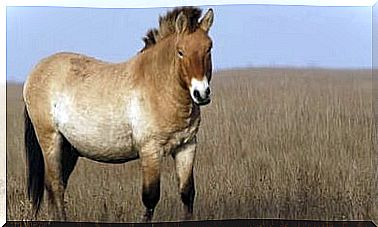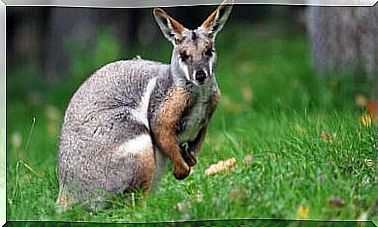The Weasel: Characteristics, Behavior And Habitat

Agile, elusive, with excellent sense of smell and hearing, the weasel also enjoys a reputation as an aggressive animal. This small carnivorous mammal can hunt prey 5-10 times larger than its size. In this article we will reveal all the details of the Mustela nivalis (this is its scientific name), which usually drinks the blood of the animals it captures, to feed.
A small, flexible and slender mustelid
Widespread in both Eurasia and North America, the weasel is the smallest mustelid species known to date. It has a life expectancy ranging from one to two years, although in captivity it can even exceed eight.
Among its physical characteristics we must remember:
- Height at the withers : 20 to 35 centimeters.
- Weight : between 60 and 170 grams for males and between 40 and 65 grams for females.
- Body elongated, flexible and slender, with a length between 17 and 23 cm.
- Dense fur, but short in winter and thinner in summer. Color, on the other hand, is variable. It can range from dark brown to dark chocolate, or from pale reddish brown to reddish blond. Both the belly and the other lower areas, including the jaw and the inner side of the limbs, are white.
- Flattened head and short muzzle. The neck is elongated.
- Prominent and dark colored eyes.
- Short and rounded ears.
- Powerful and pointed teeth.
- Short, stubby legs with five toes and sharp nails.
- Tail of uniform color and 3 to 17 centimeters long.
What do you need to know about the weasel?
It is a very territorial animal (it marks the areas with feces and urine) and also solitary : the small families are seen only during the mating season. The weasel is a mammal that is active both day and night and moves by jumping.
It adapts to different territories, provided it can obtain its livelihood and that it has enough vegetation to find shelter. Therefore, it is a living being equally distributed in flat areas and also in high mountains.
Its adaptability is strengthened by the fact that it uses burrows built by other animals, although it is able to find refuge, for example, in tree trunks, in abandoned human constructions or between spaces of stones.
With respect to the reproductive phase, it is necessary to point out some very particular aspects. When warm weather arrives, males fight each other to make sure they choose a mate . Once fertilized, the female’s gestation period lasts about 34-37 days. Four to eight young weasels can be seen in each litter. These animals are viviparous and can have one or two births per year and up to three if the physical conditions of the mammal permit.
Physically, weasel cubs are born hairless, with their eyes closed and weighing between one and three grams. After 9 or 12 weeks, the family group breaks up.
A small but voracious carnivore: this is how it hunts
This little mustelid is fast and quiet when it comes to getting food. It usually follows certain routes to hunt. Choose to climb trees, or examine different cavities by entering caves and lairs of other animals. It can even swim and dive to get food.
As you may have seen in films and documentaries, a typical weasel attitude is to stand up on its hind legs to smell the air and identify its prey. Once the attack is complete, the prey is immobilized with the front legs before a lethal bite is delivered to the back of the head.

At first, he usually drinks the blood of the captured animal and then moves it to a safer place to eat it without the danger of other individuals coming to claim their share. It should be noted that he has a very fast metabolism, so he spends a good part of the day hunting.
Weasel prey and predators
The diet of this small but voracious mammal is very varied and includes animals that exceed it in size and weight. Among its favorite prey, we find:
- Rabbits.
- Hares.
- Dormice.
- Mice.
- Rats.
- Voles.
- Shrews.
- Hens and other birds.
- Pigeons.
- Birds.
- Partridges.
But it should also be noted that it can eat fish, insects and some reptiles and amphibians. Other times it climbs into nests to steal eggs or devour helpless chicks.
As for its natural enemies, there are other carnivores that consider it a prey, such as the wild cat, the common genet or the large birds of prey. Furthermore, the young weasels are often victims of attacks by lizards and snakes.








